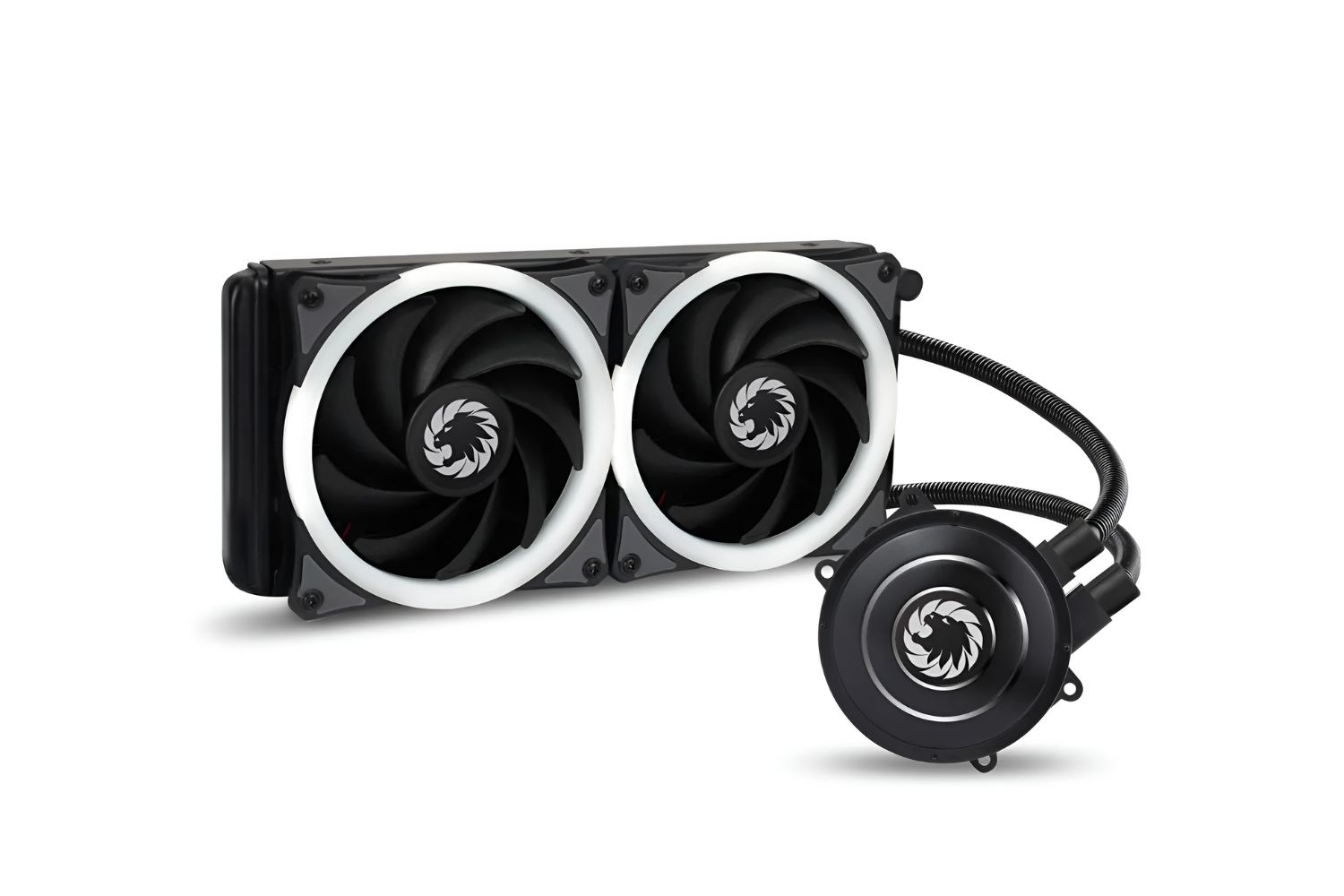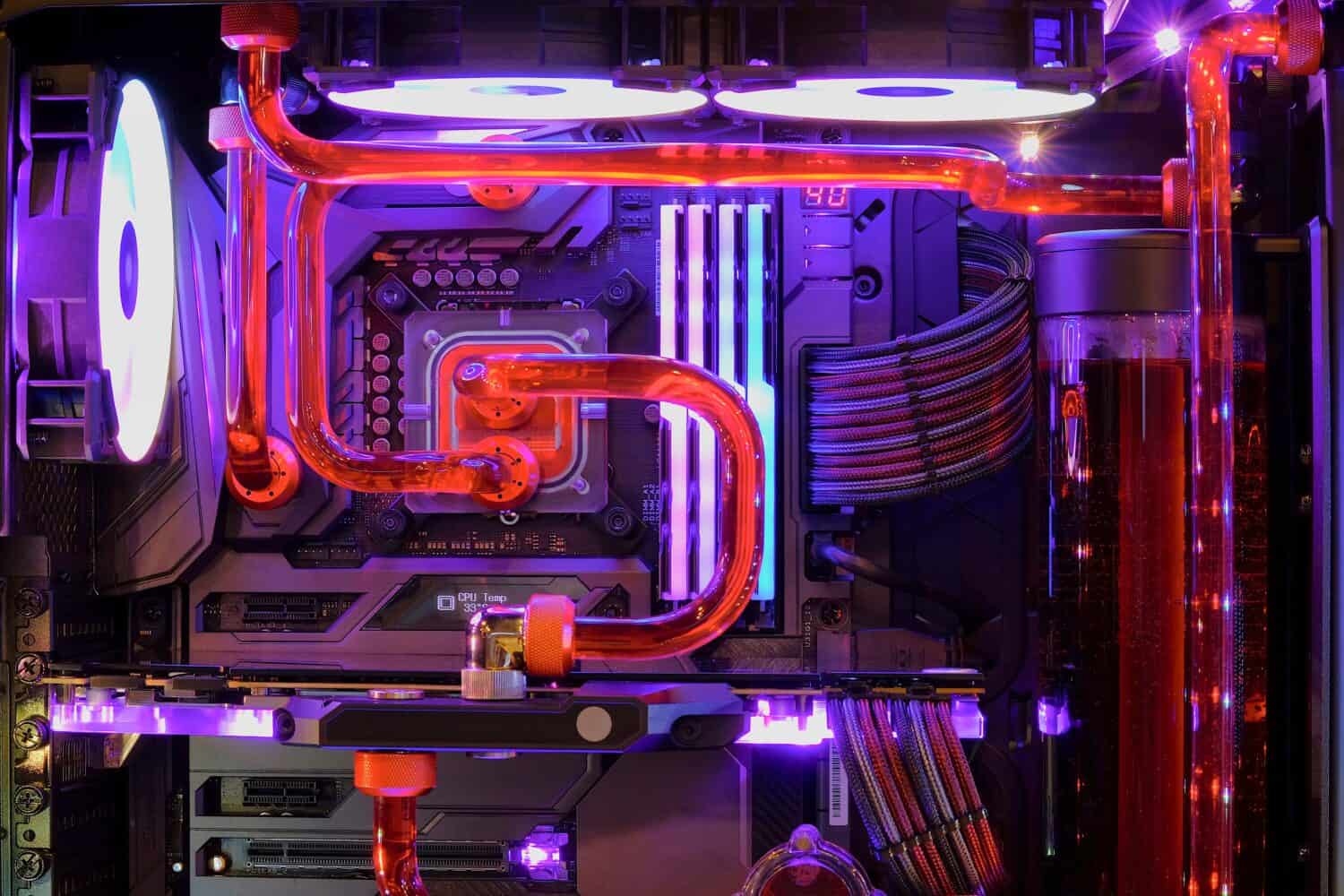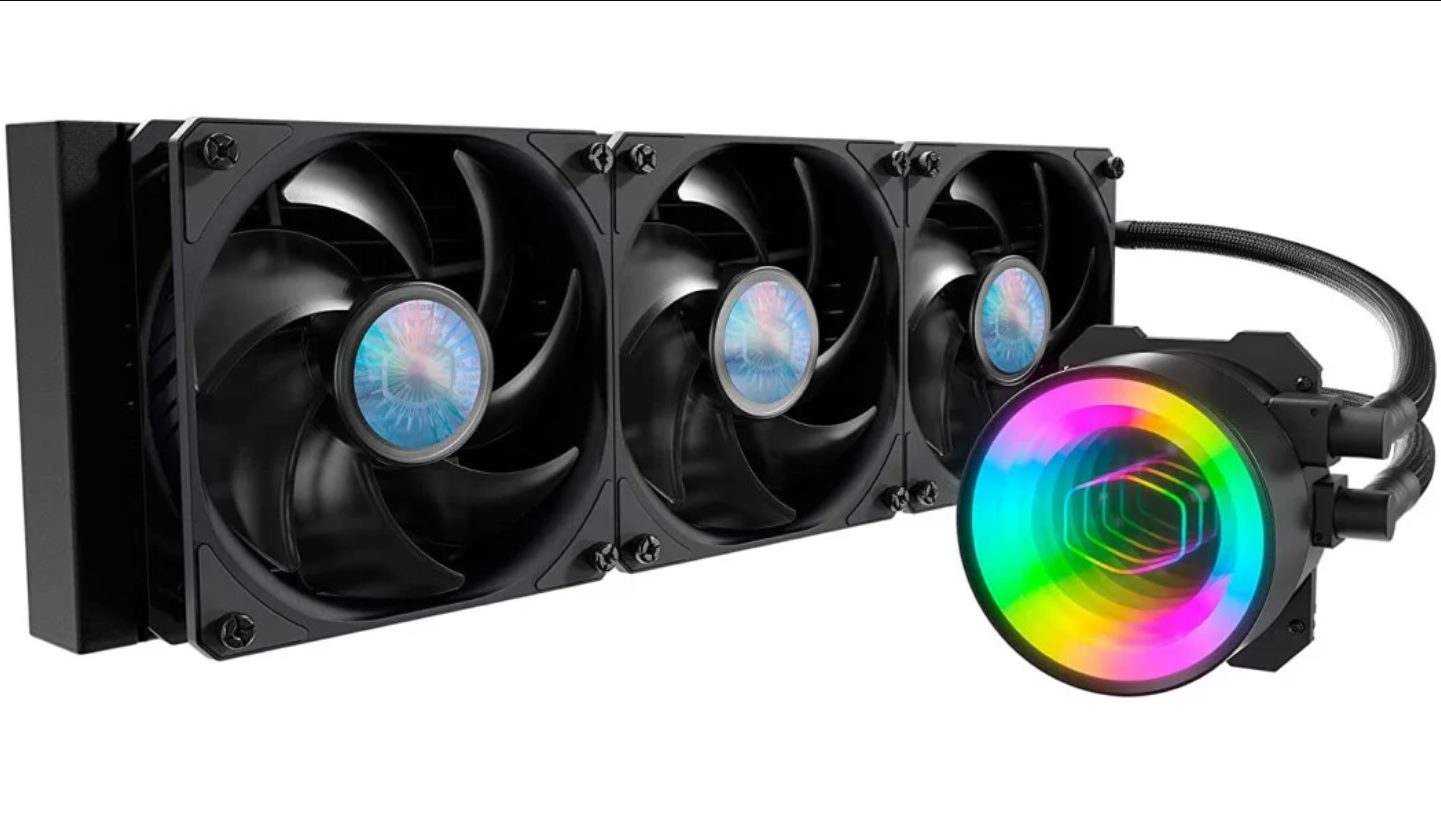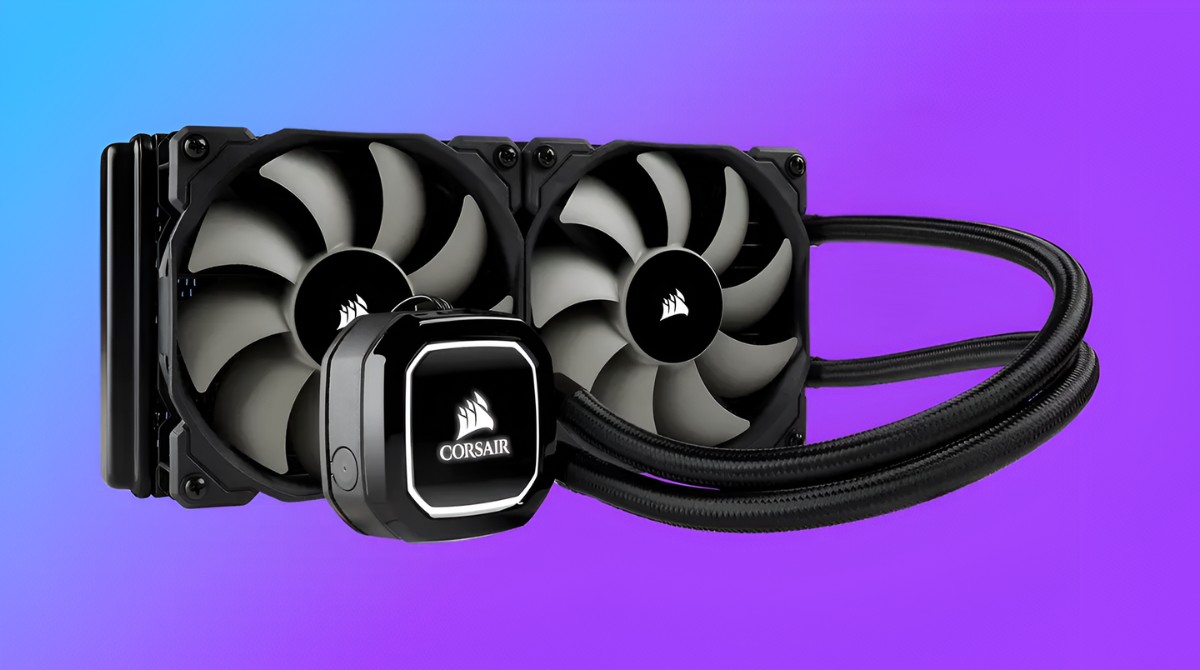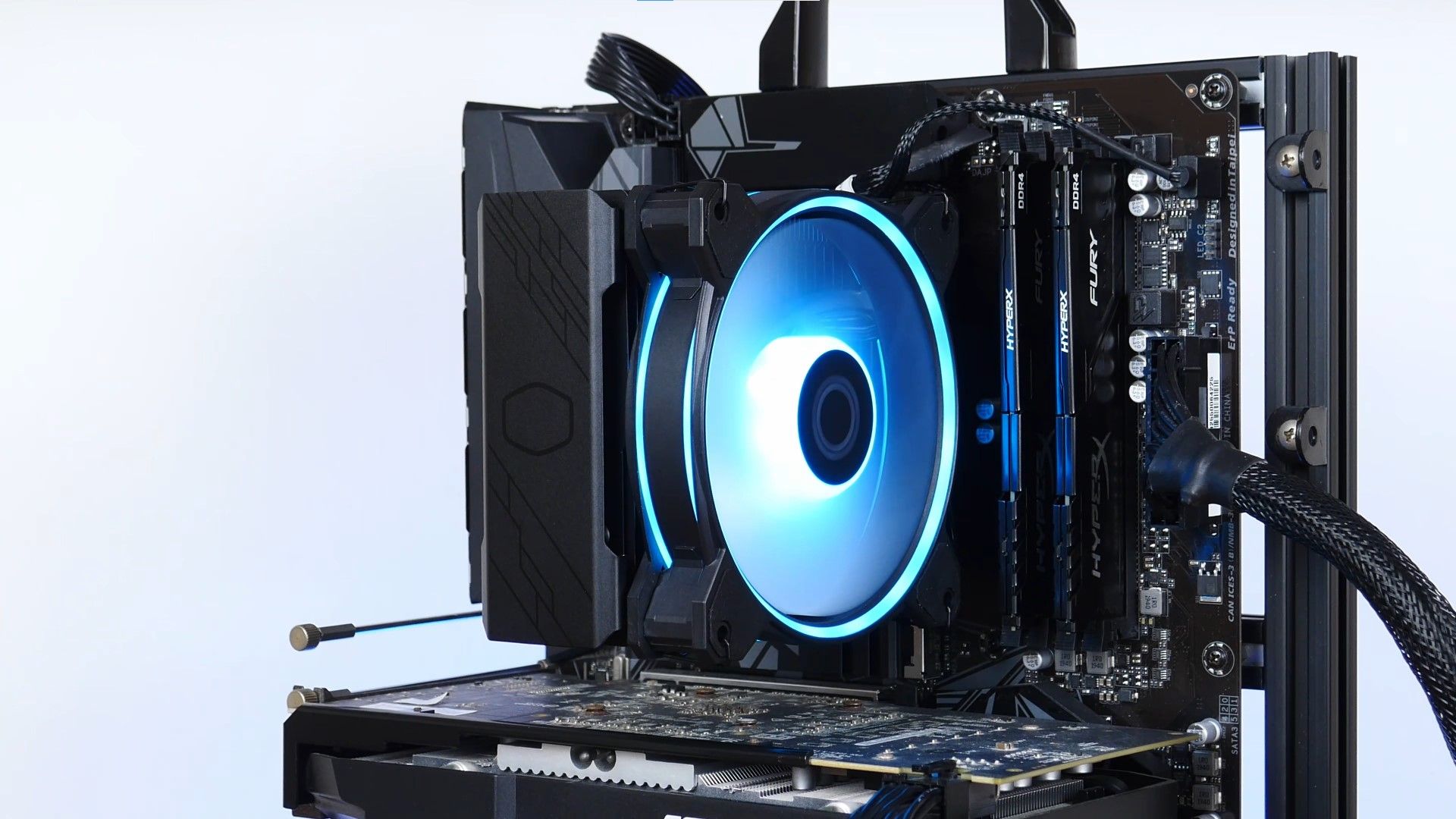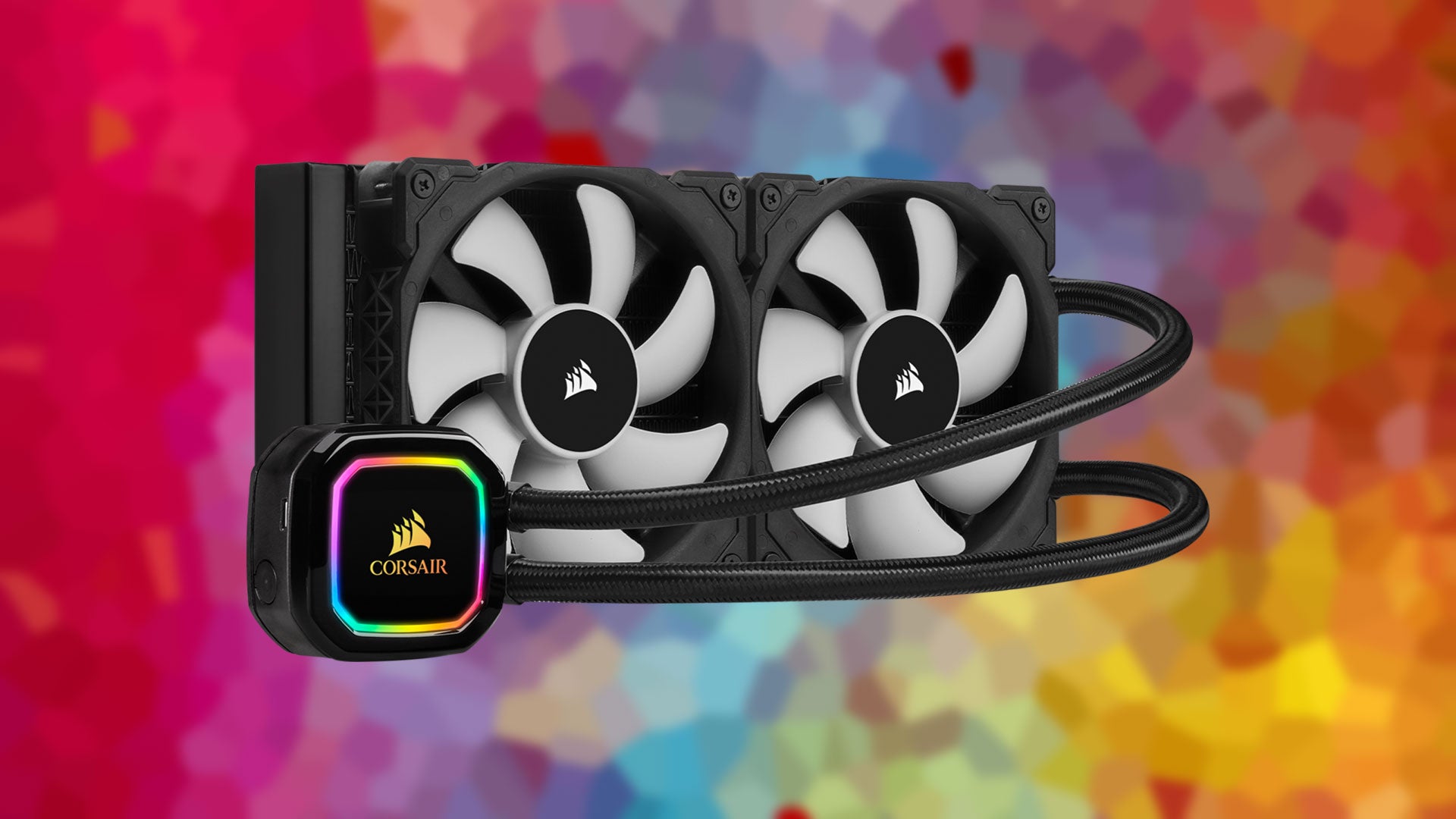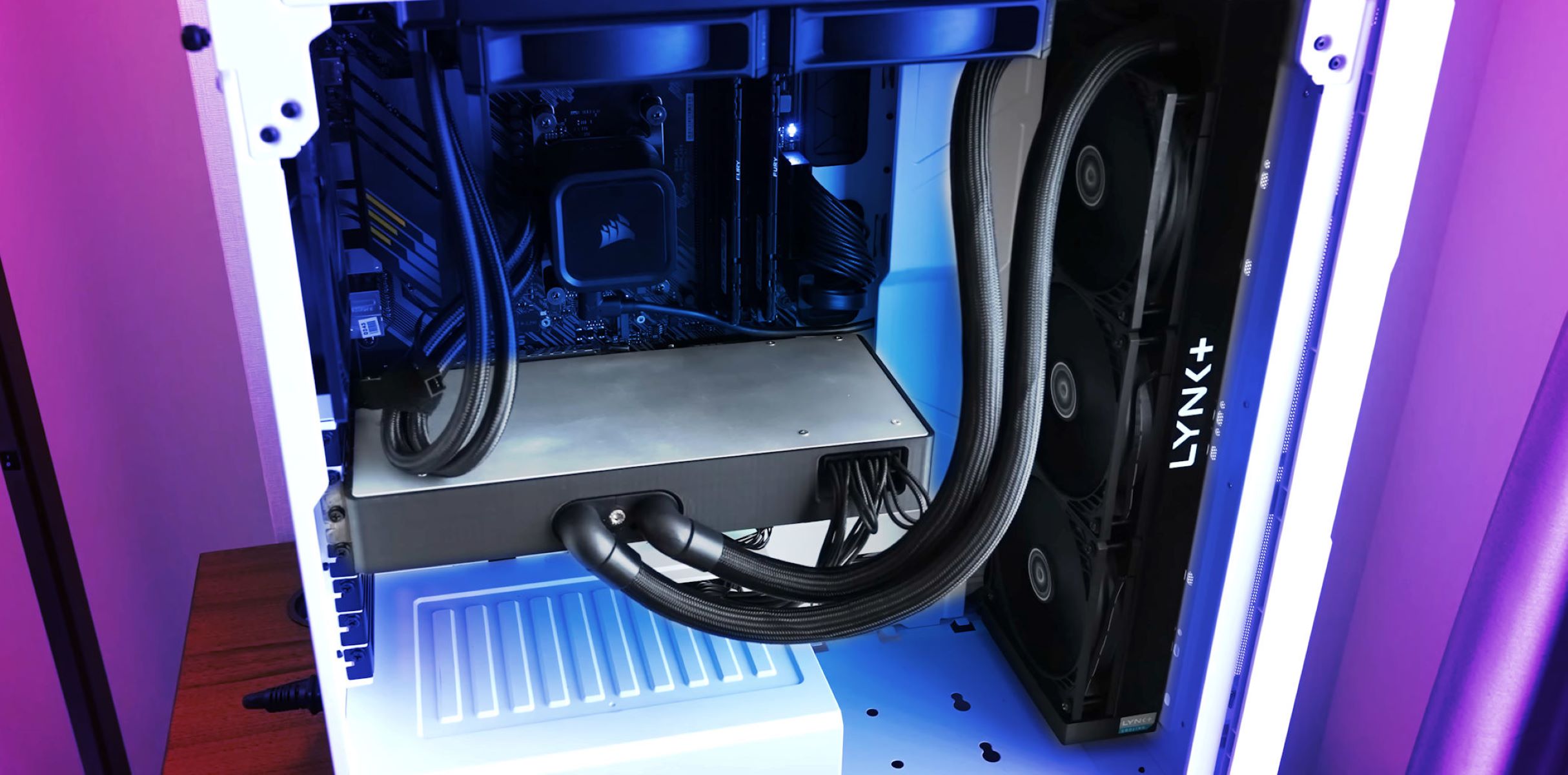Introduction
The performance of a computer largely depends on the efficiency of its cooling system, especially when it comes to the central processing unit (CPU). Overheating can lead to performance issues, system crashes, and even permanent damage to the CPU. To combat this, closed loop CPU coolers have emerged as a popular solution for efficient cooling.
A closed loop CPU cooler is a self-contained cooling system that consists of a pump, radiator, and fan. It is designed to effectively dissipate heat generated by the CPU and maintain optimal operating temperatures. This ensures better performance and longevity of the CPU while reducing the risk of overheating-related problems.
So, how does a closed loop CPU cooler work? What factors can affect its lifespan? And how long can you expect it to last? In this article, we will explore these questions and provide you with essential information about closed loop CPU coolers.
Whether you are a PC enthusiast, a gamer, or a professional working with resource-intensive applications, understanding the lifespan and maintenance of a closed loop CPU cooler is crucial. By knowing the signs of a failing cooler and how to extend its life, you can maximize its performance and protect your valuable CPU investment for years to come.
What Is a Closed Loop CPU Cooler?
A closed loop CPU cooler, also known as an all-in-one (AIO) cooler, is a type of cooling system specifically designed for CPUs. It offers an efficient and convenient alternative to traditional air cooling solutions. Unlike air coolers that rely on a heatsink and fan combination, closed loop CPU coolers utilize a closed circuit of liquid coolant to dissipate heat.
The closed loop CPU cooler consists of a few key components. It includes a pump, which circulates the coolant through the system, a radiator, which helps in heat transfer, and a fan, which pushes air through the radiator to dissipate the heat. The coolant absorbs heat from the CPU and transports it to the radiator, where the heat is dissipated, resulting in improved cooling performance.
One of the main advantages of closed loop CPU coolers is their easy installation and maintenance. They come pre-filled and sealed, eliminating the need for manual coolant refills, making them more user-friendly than custom liquid cooling solutions. Additionally, the compact design of closed loop CPU coolers allows for better compatibility with different CPU sockets and cases.
Another benefit of closed loop CPU coolers is their superior cooling performance. The liquid coolant used in these coolers has a higher heat capacity compared to air, allowing it to absorb and dissipate heat more efficiently. This leads to lower CPU temperatures, which in turn improves overall system performance and stability.
Furthermore, closed loop CPU coolers are often equipped with advanced features, such as customizable RGB lighting, intuitive software control, and low-noise operation. These features not only enhance the aesthetics of your PC but also provide a quieter and more enjoyable computing experience.
In summary, closed loop CPU coolers offer a more efficient and convenient cooling solution for CPUs compared to traditional air coolers. With their easy installation, superior cooling performance, and additional features, closed loop CPU coolers have become a popular choice among PC enthusiasts and gamers who seek optimal cooling for their systems.
How Do Closed Loop CPU Coolers Work?
Closed loop CPU coolers utilize a simple yet effective mechanism to cool down the CPU. The process begins with the pump, which is responsible for circulating the liquid coolant throughout the system.
Once the CPU starts generating heat, the coolant absorbs the heat through direct contact with the CPU’s integrated heat spreader. The heated coolant then flows through tubes or channels to the radiator, which is usually located at the rear or top of the computer case.
The radiator plays a crucial role in dissipating the heat. It is equipped with a series of metal fins that provide a large surface area for heat transfer. As the heated coolant passes through the radiator, the fan attached to it draws cool air from the surroundings and blows it across the fins. This airflow facilitates the transfer of heat from the coolant to the air, effectively cooling down the liquid coolant.
Once the heat is transferred to the air, the now-cooled coolant is pumped back to the CPU, and the cycle continues. The continuous circulation of coolant ensures that the CPU remains at an optimal temperature, preventing overheating and maintaining efficient performance.
It is important to note that closed loop CPU coolers are different from custom liquid cooling setups, which involve separate components that need to be assembled and maintained. Closed loop CPU coolers are pre-filled and sealed, meaning they do not require users to handle or refill the coolant manually. This makes them more straightforward and suitable for users who want the benefits of liquid cooling without the complexities that come with custom setups.
In addition to their basic functionality, some closed loop CPU coolers incorporate additional features to enhance performance and user control. These features can include variable speed fans for better cooling efficiency, RGB lighting for aesthetics, and software control to adjust fan speeds and monitor system temperatures.
Overall, the working principle of closed loop CPU coolers is relatively simple yet effective. By utilizing liquid coolant and a radiator with a fan, these coolers successfully dissipate heat from the CPU, keeping it at optimal operating temperatures for improved performance and longevity.
Factors That Affect the Lifespan of a Closed Loop CPU Cooler
The lifespan of a closed loop CPU cooler can vary depending on several factors. Understanding these factors can help you make informed decisions when it comes to maintenance and replacement. Here are some key factors that can affect the lifespan of a closed loop CPU cooler:
1. Quality of Components: The quality of the components used in the closed loop CPU cooler plays a significant role in its lifespan. Coolers from reputable brands that use high-quality materials and reliable pumps, radiators, and fans are more likely to have a longer lifespan compared to lower-quality alternatives.
2. Installation and Maintenance: Proper installation and regular maintenance can greatly impact the longevity of a closed loop CPU cooler. Ensuring that the cooler is correctly installed, with proper contact between the CPU and cooler’s block, promotes efficient heat transfer. Regular maintenance, such as cleaning dust from the radiator and fans, can help prevent overheating and prolong the cooler’s lifespan.
3. Ambient Temperature: The ambient temperature of the environment where the computer is used can affect the performance and lifespan of the closed loop CPU cooler. Cooler environments allow for easier heat dissipation, reducing the workload on the cooler. On the other hand, high ambient temperatures can put additional strain on the cooler and potentially shorten its lifespan.
4. Overclocking and CPU Load: Overclocking the CPU and subjecting it to heavy loads for extended periods can generate more heat and put added stress on the closed loop CPU cooler. This increased workload can impact the lifespan of the cooler. If you plan to overclock your CPU or engage in resource-intensive tasks, it is crucial to choose a cooler that can handle the extra heat generated.
5. Usage and Airflow: The way the computer is used and the overall airflow within the case can also affect the lifespan of the closed loop CPU cooler. Computers that are used for long periods or in demanding applications may experience higher temperatures and require more cooling. Additionally, inadequate airflow within the case can lead to heat buildup, putting unnecessary strain on the cooler.
It is important to keep in mind that the lifespan of a closed loop CPU cooler is not always predictable and can vary from one unit to another. While some coolers may last for several years, others may need replacement sooner. It is recommended to monitor the cooler’s performance, check for any signs of deteriorating functionality, and consider replacement if necessary.
By understanding these factors and taking appropriate measures, such as investing in a high-quality cooler, proper installation and maintenance, and ensuring adequate airflow, you can potentially extend the lifespan of your closed loop CPU cooler and maintain optimal cooling for your CPU.
The Lifespan of a Closed Loop CPU Cooler
The lifespan of a closed loop CPU cooler can vary depending on multiple factors, including the quality of components, usage conditions, and maintenance. While it is challenging to provide an exact lifespan for every closed loop CPU cooler, a general estimation can be given based on industry standards and user experiences.
On average, a well-maintained closed loop CPU cooler can last anywhere from 3 to 6 years. However, some coolers may last longer, while others may fail prematurely. The actual lifespan can be influenced by several factors, such as the quality of components used, the ambient temperature of the environment, and the workload subjected to the CPU.
The quality of components used in the closed loop CPU cooler is a crucial factor in determining its lifespan. Coolers from reputable brands that use high-quality materials and reliable pumps, radiators, and fans tend to have a longer lifespan compared to cheaper alternatives. Investing in a cooler from a trusted brand can provide peace of mind and ensure better longevity.
The ambient temperature of the environment where the computer is used also influences the lifespan of the closed loop CPU cooler. Cooler environments allow for easier heat dissipation, reducing the workload on the cooler. Conversely, high ambient temperatures can put added stress on the cooler and potentially shorten its lifespan. Ensuring proper airflow within the computer case and maintaining a reasonable ambient temperature can contribute to a longer lifespan for the cooler.
Additionally, the workload on the CPU can impact the lifespan of the closed loop CPU cooler. Overclocking the CPU or subjecting it to consistent heavy loads generates more heat, putting increased stress on the cooler. If you plan to overclock your CPU or perform resource-intensive tasks, it is essential to choose a cooler capable of handling the additional heat. A cooler that can effectively dissipate the extra heat generated by the CPU will likely have a longer lifespan.
Regular maintenance is crucial for maximizing the lifespan of a closed loop CPU cooler. Cleaning dust and debris from the radiator and fans, as well as ensuring proper installation with good contact between the CPU and cooler’s block, can help maintain efficient heat transfer and prevent overheating. Regular monitoring of the cooler’s performance and addressing any signs of deterioration can also contribute to extending its lifespan.
While the estimated lifespan of a closed loop CPU cooler provides a general guideline, it is important to observe the signs of a failing cooler. Some common signs include increased CPU temperatures, louder fan noises, and system instability. If you notice any of these signs, it may be time to consider replacing the cooler to avoid potential damage to the CPU.
By understanding the factors that influence the lifespan of a closed loop CPU cooler and taking proper measures to maintain it, you can maximize the longevity of your cooler and ensure optimal performance and cooling for your CPU.
Signs That Your Closed Loop CPU Cooler Needs Replacement
While closed loop CPU coolers are designed to provide efficient cooling for your CPU, they are not immune to wear and tear. Over time, components may degrade, leading to diminished performance and potential risks to your CPU. It is important to be aware of the signs that indicate your closed loop CPU cooler may need replacement. Here are some common signs to look out for:
1. Increased CPU Temperatures: One of the primary indicators that your closed loop CPU cooler may need replacement is a noticeable increase in CPU temperatures. If you notice that your CPU temperature is consistently higher than usual, even under normal operating conditions, it may indicate a failing cooler. High temperatures can lead to performance issues and potential damage to the CPU over time.
2. Noisy Fan Operation: As closed loop CPU coolers age, the fans may start to make unusual noises. If you hear grinding, clicking, or rattling sounds coming from the cooler’s fan, it could be a sign of worn-out bearings or other internal problems. Noisy fan operation can disrupt your computing experience and should not be ignored.
3. Leaks or Moisture: Leaks or the presence of moisture around the closed loop CPU cooler can be a clear indication of a failing cooler. This can occur due to deteriorating seals, cracked tubes, or damaged components. Leaks or moisture can cause irreversible damage to your computer components, and prompt action is necessary to prevent further issues.
4. System Instability and Crashes: If you experience frequent system crashes, freezes, or random reboots, it could be a symptom of inadequate cooling provided by the closed loop CPU cooler. Overheating due to a failing cooler can cause the system to become unstable, resulting in unexpected errors and shutdowns.
5. Reduced Cooling Performance: Over time, you may notice a decrease in the overall cooling performance of your closed loop CPU cooler. This can manifest as higher CPU temperatures, even at idle or low-load situations. If you find that despite proper maintenance and adequate airflow, your CPU temperatures remain consistently high, it may be time to consider a replacement.
It is important to note that these signs may not always indicate a failing closed loop CPU cooler, as other factors like software issues or inadequate thermal paste application can also contribute to performance problems. However, if you notice multiple signs or experience a combination of these issues, it is advisable to consider replacing your closed loop CPU cooler.
Regular monitoring of your CPU temperatures, fan operation, and system stability can help you identify these signs early on. In the event that your closed loop CPU cooler displays any of these signs, replacing it with a new cooler can ensure reliable cooling performance and protect your CPU from potential damage.
Tips to Extend the Lifespan of Your Closed Loop CPU Cooler
Your closed loop CPU cooler plays a vital role in maintaining the optimal operating temperature of your CPU. To maximize its lifespan and ensure efficient cooling performance, consider implementing the following tips:
1. Proper Installation: Ensure that your closed loop CPU cooler is properly installed according to the manufacturer’s instructions. This includes ensuring that the cooler is securely mounted, with good contact between the CPU and cooler’s block. Proper installation facilitates efficient heat transfer, reducing the workload on the cooler.
2. Regular Dust Cleaning: Dust can accumulate on the radiator and fans of your closed loop CPU cooler, obstructing airflow and hampering cooling performance. Regularly clean the cooler using compressed air or a soft brush to remove dust and debris. This prevents heat buildup and potential strain on the cooler.
3. Maintain Adequate Airflow: Proper airflow within your computer case is crucial for effective cooling. Ensure that there is adequate space around the closed loop CPU cooler for intake and exhaust of air. Proper cable management and placement of case fans can contribute to improved airflow, reducing the workload on the cooler.
4. Monitor CPU Temperatures: Regularly monitor the temperatures of your CPU using appropriate software. Keeping an eye on the temperatures allows you to identify any sudden spikes or consistent high readings, which may indicate a failing cooler. Prompt action can prevent potential damage to your CPU.
5. Avoid Overclocking Excessively: While overclocking can boost CPU performance, it also generates more heat. Excessive overclocking can put added stress on the closed loop CPU cooler and significantly reduce its lifespan. If you choose to overclock, ensure that your cooler is capable of handling the extra heat generated.
6. Maintain a Suitable Ambient Temperature: The ambient temperature of the environment where your computer is located can influence the cooling performance of your closed loop CPU cooler. Ensure that the room temperature remains within acceptable limits and avoid using your computer in excessively hot or cold environments.
7. Regularly Update Firmware and Software: Monitor for firmware or software updates provided by the manufacturer of your closed loop CPU cooler. These updates often include optimizations and bug fixes that can improve the cooling performance and overall lifespan of the cooler.
8. Replace the Liquid Coolant: Over time, the liquid coolant in your closed loop CPU cooler may degrade, losing its effectiveness in dissipating heat. Consult the manufacturer’s instructions on how and when to replace the coolant. Proper maintenance and periodic coolant replacement can enhance the cooling performance and lifespan of your cooler.
9. Inspect for Leaks or Damage: Periodically inspect your closed loop CPU cooler for any signs of leaks, such as moisture or discoloration around the cooler or its connections. Also, keep an eye out for any physical damage to the cooler, such as bent fins or cracked tubes. Promptly address any leaks or damages to prevent further complications.
By implementing these tips, you can help extend the lifespan of your closed loop CPU cooler and ensure reliable cooling performance for your CPU. Regular maintenance, proper installation, and monitoring will contribute to the longevity and optimal functioning of your cooling system.
Conclusion
Closed loop CPU coolers provide an efficient and convenient solution for maintaining optimal temperatures for CPUs. Understanding the lifespan and maintenance of these coolers is crucial for maximizing their performance and protecting your valuable CPU investment.
In this article, we explored what closed loop CPU coolers are and how they work. We discussed the factors that can affect the lifespan of these coolers, including the quality of components, installation and maintenance, ambient temperature, CPU load, and usage conditions. Additionally, we provided insights into the signs that indicate your closed loop CPU cooler may need replacement, such as increased CPU temperatures, noisy fan operation, leaks or moisture, system instability, and reduced cooling performance.
To extend the lifespan of your closed loop CPU cooler, we offered useful tips, including proper installation, regular dust cleaning, maintaining adequate airflow, monitoring CPU temperatures, avoiding excessive overclocking, ensuring suitable ambient temperature, updating firmware and software, replacing liquid coolant, and inspecting for leaks or damage.
By following these tips and taking appropriate measures, you can optimize the performance and longevity of your closed loop CPU cooler. Regular maintenance, monitoring, and proactive replacement when necessary will ensure efficient cooling for your CPU and help protect it from potential damage.
Remember, every closed loop CPU cooler is different, and individual lifespans may vary. It is important to stay vigilant and responsive to signs of potential issues to avoid any adverse effects on your CPU.
By making informed decisions and implementing these guidelines, you can enjoy reliable cooling performance and prolong the lifespan of your closed loop CPU cooler, ensuring optimal performance for your CPU and overall system.







